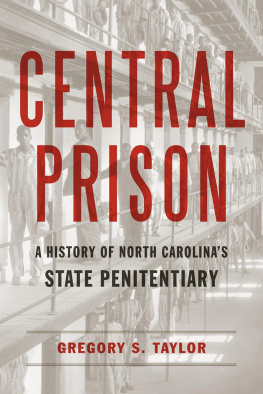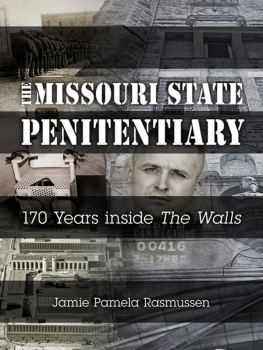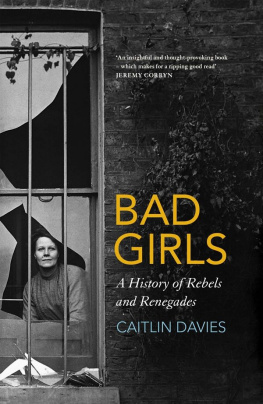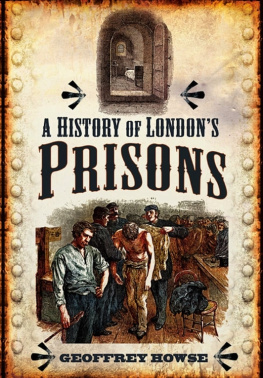Published by The History Press
Charleston, SC
www.historypress.net
Copyright 2017 by Dale M. Brumfield
All rights reserved
Front cover, clockwise from top left: VCU James Branch Cabell Library Digital Collections; Library of Virginia; Library of Virginia; Alexander Macaulay.
First published 2017
e-book edition 2017
ISBN 978.1.43966.316.5
Library of Congress Control Number: 2017945014
print edition ISBN 978.1.46713.763.8
Notice: The information in this book is true and complete to the best of our knowledge. It is offered without guarantee on the part of the author or The History Press. The author and The History Press disclaim all liability in connection with the use of this book.
All rights reserved. No part of this book may be reproduced or transmitted in any form whatsoever without prior written permission from the publisher except in the case of brief quotations embodied in critical articles and reviews.
FOREWORD
Herein are untouched traces
Of men who are not yet without love or mercy
Though loathed and tormented daily
For it is 1984, and has been for years
Herein, Evans D. Hopkins (1984)
The degree of civilization in a society can be judged by entering its prisons, Fyodor Dostoyevsky, the renowned Russian author of Crime and Punishment, wrote in 1861. In that respect, with Dale Brumfields most thorough history of the Virginia State Penitentiary, we are provided with a valuable overview of the evolution of our civilization and the incarceration culture that still plagues our nation. That culture, in large measure, began in the newly formed America, at 500 Spring Street in Richmond, Virginia.
I did not know Dale Brumfield when he asked me to take part in a dedication ceremony for the historical marker of the site of the Virginia State Penitentiary. I was incarcerated there for the first seven years of a life sentence for armed robbery, meted out to a then twenty-six-year-old by an all-white jury in my hometown of Danville, Virginia. But I had relegated memories of the hell that had been The Wall, as we called it, to the pages of a book and had no desire to dredge up repressed memories. In addition to fearing the return of the nightmares of the place, I was apprehensive that a historical marker might somehow be seen as a monument, of sorts, to a symbol of mans inhumanity to man.
I told Dale of my misgivings and that I was concerned that a book of history might not do justice to the humanity of those forced to live within. He responded by saying that this book was his effort to remind people of that humanity and to remind them of the inhumanity, as well. He asked me to read his manuscript and decide for myself.
What I found, and what the reader will find, is a fascinating storyor, rather, a compendium of fascinating stories that make up a microcosmic saga of a place in time, across time. From Thomas Jeffersons vision of a place of penitence; to the use of the institution as slavery by another name; to brutal floggings, forced sterilizations and medical castrations; to the steady and racist use of the electric chair, Dale Brumfield paints a portrait of punishment that, indeed, was often criminal in and of itself.
But he also shows men who, as my poem of 1984 expresses, are not yet without love or mercy. From the remarkable prisoner who playfully kisses the cheek of a bound and blindfolded guard before leaving him unharmed and escaping to a man who is condemned to die but protects guards during the infamous Mecklenburg escape, we are often surprised by the humanity of the men about whom he writes. He tells of writers, reporters, musicians, artisans and artists. As one of those men, who found his voice as a writer and regained his humanity as an artist, I am grateful for his nuanced depictions. And he writes of volunteers and teachers from the Richmond community who came into the prison regularly and provided counseling, friendship and meaning. Iand countless othersbenefited to a degree that cannot fully be fathomed.
There were bonds of brotherhood formed by most of us who livedand diedat the Virginia State Penitentiary. And it would be remiss of me not to make mention of those who came to visit the incarcerated at 500 Spring Streetfamily members, friends and loved ones. Three of those loved ones lost their lives in late 1988 in a prison visitation van accident in which twenty-one people were also injured. Most of those in the van were Richmonders, traveling to Nottoway Correctional Center, to visit prisoners who had recently been transferred to the rural prison, as the penitentiary was closing down and emptying its population. Two of the dead, Nancy LeLasheur and her toddler son, Ben, were on their way to see me.
While some of my memories of that place called The Wall can forever stay repressed, thinking of Nancy and Ben reminds me that there are thousands of men and women in this state who will find interest and meaning in this work by Dale Brumfield. And for that, we can be thankful.
Evans Hopkins is the author of the acclaimed memoir Life after Life: A Story of Rage and Redemption, published by Simon and Schuster/Free Press. From 1982 until 1997, Hopkins became one of the most widely read incarcerated writers in America. His social justice and incarceration op-eds have been published by the Washington Post, the New Yorker Magazine and Slate.com, among others. In 2015, on behalf of the Swanson Legacy Committee, Hopkins presented a special Swanson Courage Award for Civil Rights to Virginia governor Terry McAuliffe for his restoration of rights to former offenders.
AUTHORS NOTE
Someone must have slandered Josef K., for one morning, without having done anything truly wrong, he was arrested.
Franz Kafka, The Trial
There is far more left out of this story than there is in it. Everyone in Richmond prior to 1992 has a Virginia Penitentiary story, whether they were an inmate, corrections officer, psychologist, vendor, contractor or visitor. Those who spent their Saturday evenings in the 1950s watching shadows of inmates boxing, or who held vigil during a strike in the 1960s, or who spent a Thursday in the 1970s inside teaching a class, or who walked (faster than normal) or bicycled past that great wall in the 1980s on their way to work have a story to tell. I wish I could have told them all. I really do.
Many thanks to the following for their assistance and enthusiasm for this project: Charles McGuigan, Doug Dobey, the amazing Bruce Smith, Caryl Burtner, David Stover, Richard Moss, Dr. Edward H. Peeples Jr., Danny Link, Clyde King, John Whiting, Bruce Hazelgrove, Eric Gregory, Arthur J. Probst, Brian Sterowski, Jerry Givens, Thomas Haynesworth, Alan Katz, Beth Myers Yamamuro and all the Brumfields.
Also, huge thanks to:
Ben Cleary, F.T. Rea and Jerry Williams for their great help and insight with literature, sports and film.














